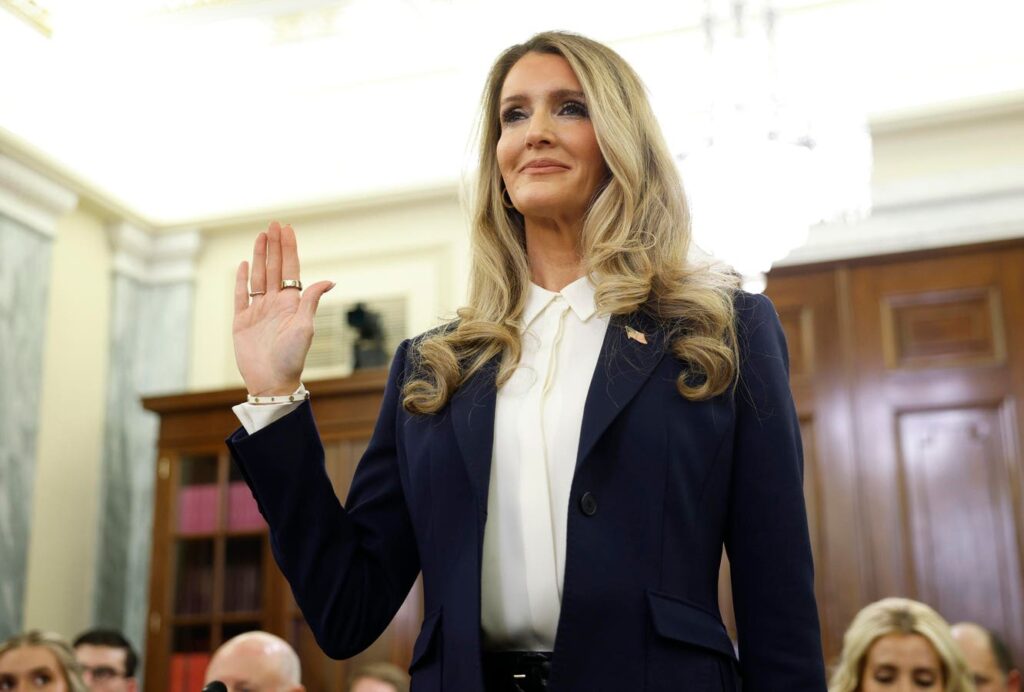Manufacturing companies could soon qualify for bigger Small Business Administration loans. It can’t hurt in the effort to bring production back to the U.S., but small business bankers are backing the proposal for a different reason.
On May 2, Rep. Roger Williams (R-TX), Sen. Joni Ernst (R-IA), and Sen. Chris Coons (D-DE) introduced the Made in America Manufacturing Finance Act. The bill would raise the $5 million cap on SBA 7(a) and 504 loans to $10 million, but only for manufacturers (Project 2025, a document that has tracked closely with Trump’s plans, called for raising the 7(a) loan cap to $50 million for advanced manufacturers). The 7(a) program offers flexible financing for working capital, equipment, and real estate. The 504 program is typically used for fixed assets like land and large machinery. Both are made by private lenders but backed by the SBA, which guarantees a portion of the loan. SBA Administrator Kelly Loeffler endorsed the proposal, calling it a way to help manufacturers grow and compete. The bill fits within a broader Trump administration push to bring manufacturing back to the U.S., paired with new tariffs meant to reduce dependence on foreign production. (Williams and Ernst chair the small business committees in the House and Senate while Coons is on the Senate committee.)
Bankers say the higher limit may help some manufacturers invest in equipment or expand facilities, but they don’t expect a flood of new factories. “I’m sure there are manufacturers out there that can benefit… but my guess is there aren’t a ton of requests out there,” says Jerry Freedman, a principal at Freedom Business Financing, which helps buyers secure SBA loans. With the future and shape of Trump’s on-again, off-again tariffs unclear, many lenders say it’s too early to expect a reshoring renaissance just yet.
Still, lenders broadly support the bill. Even if it doesn’t lead to new factories, they see it as a move toward something they’ve wanted for years: a higher SBA loan cap for everyone. Of course lenders want a higher cap. They want to make bigger loans, but the ask isn’t unreasonable. The current $5 million limit hasn’t changed since 2010. If it had been adjusted for inflation, it would be about $7.5 million today.
“While raising the limit isn’t a silver bullet to reshore manufacturing, it is definitely an important part of the solution,” says Ray Drew, managing director at Truliant Federal Credit Union and host of The Art of SBA Lending podcast. He says banks often don’t make conventional loans in the $5 to $10 million range, especially for new businesses, and SBA lenders are well positioned to fill that gap.
But they haven’t been able to, not with the current cap.
“We’ve had requests previously for larger than $5 million SBA loans that we’ve had to pass on,” says Chris Hurn, founder of Phoenix Lender Services, which helps banks process and manage SBA loans. He sees the bill as a good first step and a chance to spotlight SBA lending. But Hurn says limiting the change to manufacturers is too narrow. With many Baby Boomers looking to sell their companies, buyers need bigger loans for all kinds of businesses, not just factories.
Freedom Business Financing’s Freedman hopes this bill could do just that. “I think the fact that the SBA administration is on board with increasing the max limit, even if for a small segment of businesses, has to be a good path to an increase of the limit for the overall program for all industries.”
Not everyone is convinced this will lead to broader changes.
Matthias Smith, founder of Pioneer Capital Advisory, which advises small business buyers, agrees the change could help some manufacturers invest in equipment. But he hasn’t seen much demand for manufacturing acquisitions, in part because they are hard to finance and require deep industry knowledge. He views the bill as more symbolic than game-changing and unlikely to usher in an increase to borrowing limits especially as the SBA is set to roll back looser pandemic-era rules in favor of stricter credit checks, higher equity requirements, and tougher underwriting standards overall.
“I’d be really surprised if they did increase the limit [broadly] because it seems like they’re trying to make it harder for people to participate in the program,” Smith says.
Read the full article here
